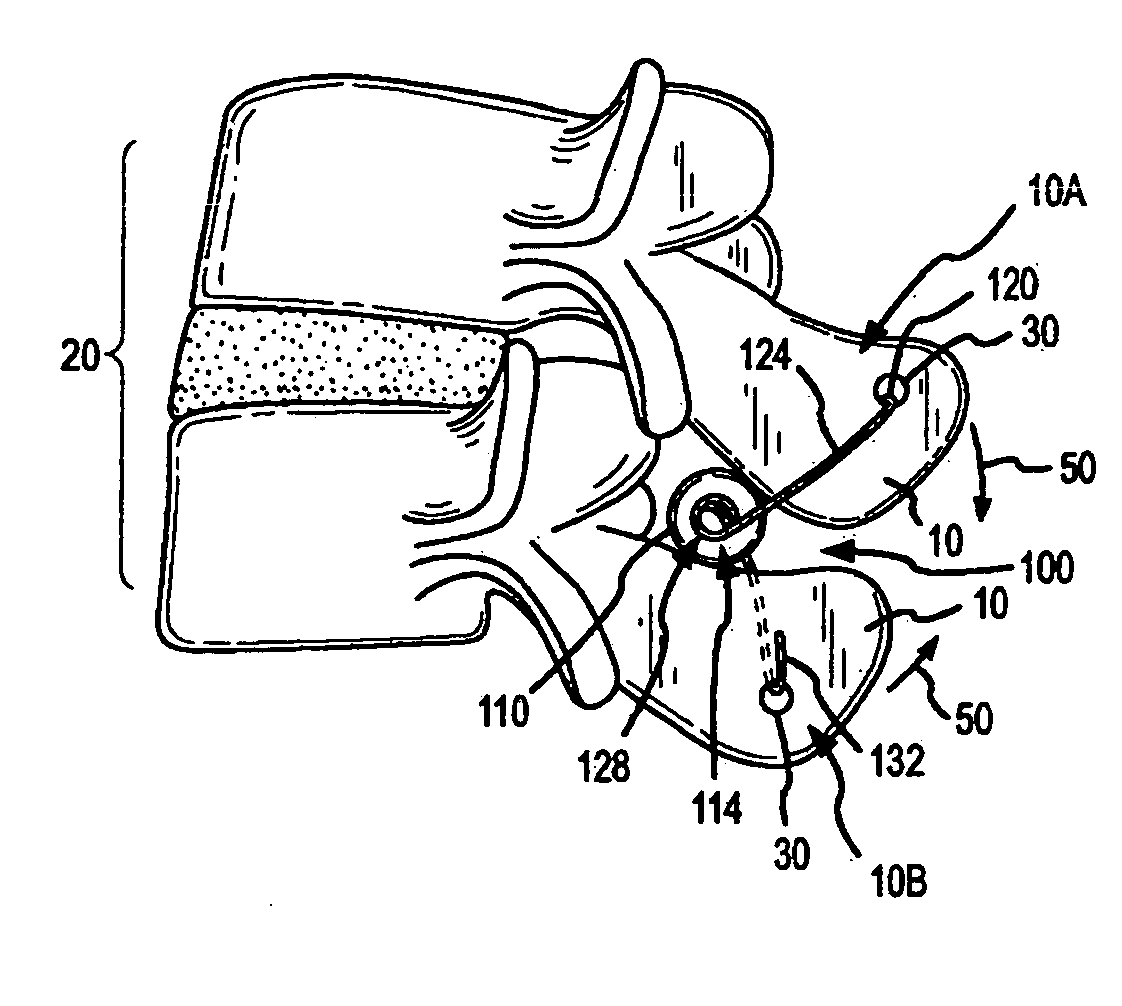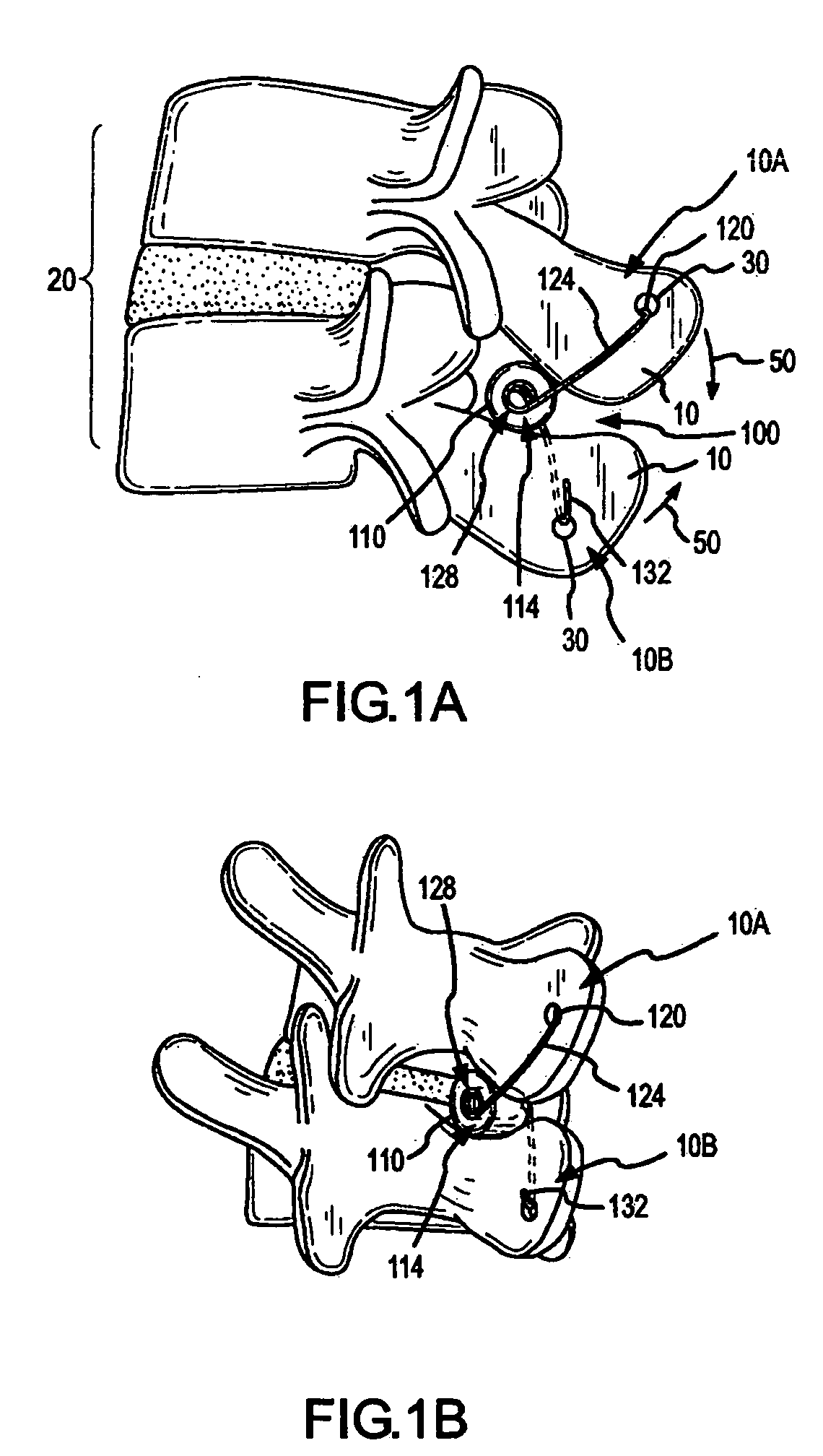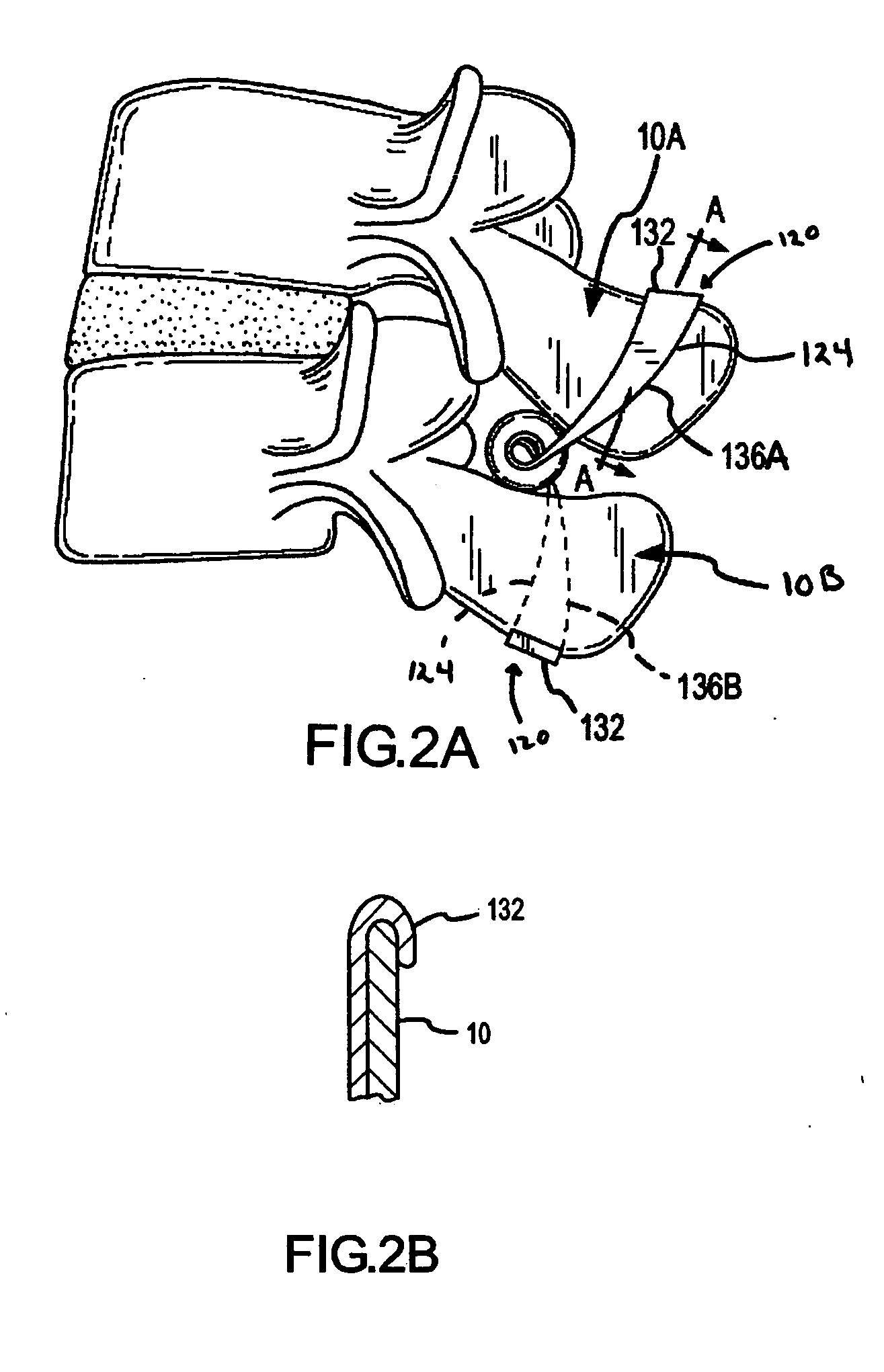Posterior dynamic stabilization of spine
- Summary
- Abstract
- Description
- Claims
- Application Information
AI Technical Summary
Benefits of technology
Problems solved by technology
Method used
Image
Examples
Embodiment Construction
General Overview
[0024] The present invention provides implantable interspinous stabilizers that provide a dynamic stability during flexion and extension and methods for using the same. In particular, the present invention provides methods and interspinous stabilizers that provide a distraction force between the adjacent superior and inferior spinous processes and a posterior compressive force on these spinous processes. As used herein, “compressive force” refers to a force that, in the absence of any counter force, will cause two spinous processes to move closer to one another. And the terms “distraction” or “distraction force” refers to a force that, in the absence of any counter force, will cause two vertebral bodies to move further apart from one another. Distraction of the adjacent spinous processes is provided by placing a distraction member between the adjacent superior and inferior spinous processes. Typically, the distraction member comprises a resiliently compressible bod...
PUM
 Login to View More
Login to View More Abstract
Description
Claims
Application Information
 Login to View More
Login to View More - R&D
- Intellectual Property
- Life Sciences
- Materials
- Tech Scout
- Unparalleled Data Quality
- Higher Quality Content
- 60% Fewer Hallucinations
Browse by: Latest US Patents, China's latest patents, Technical Efficacy Thesaurus, Application Domain, Technology Topic, Popular Technical Reports.
© 2025 PatSnap. All rights reserved.Legal|Privacy policy|Modern Slavery Act Transparency Statement|Sitemap|About US| Contact US: help@patsnap.com



